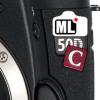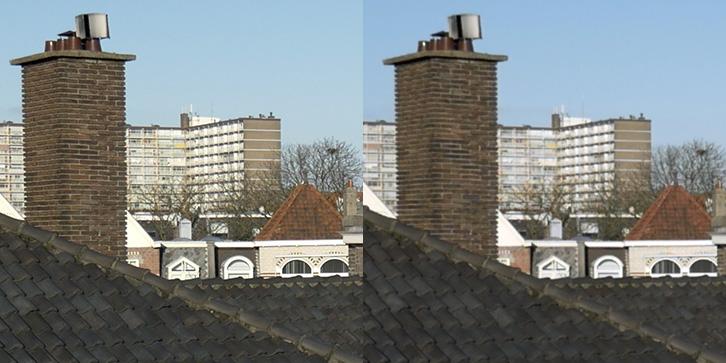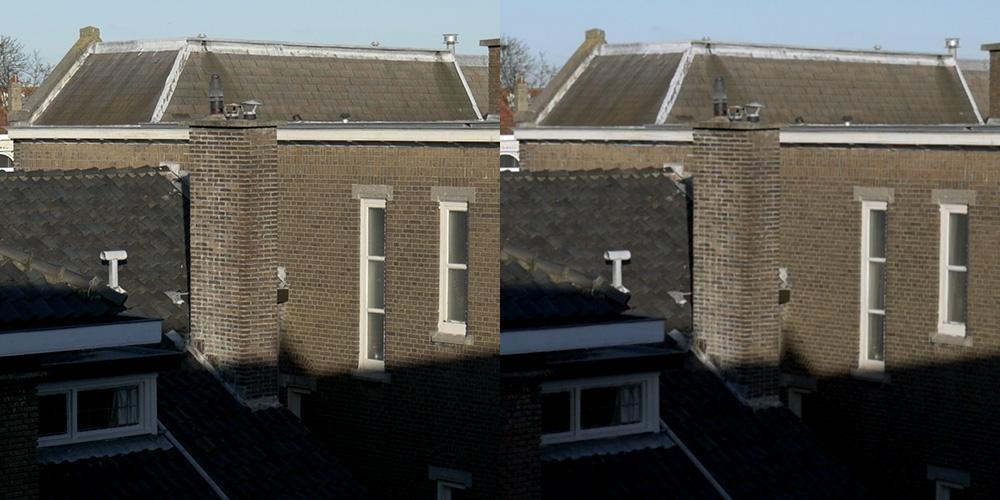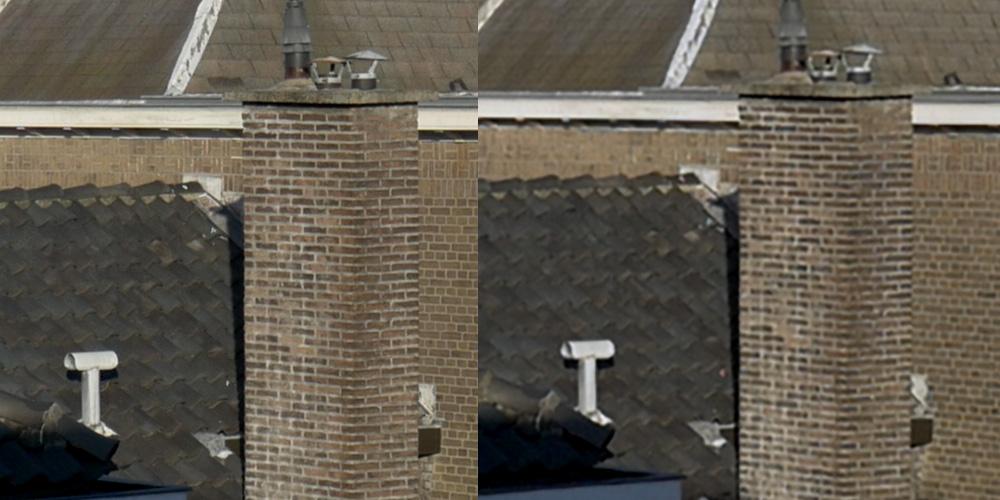-
Posts
1,653 -
Joined
-
Last visited
Content Type
Profiles
Forums
Articles
Everything posted by Julian
-
Typo in the title. It's 5120 x 2880, like it says in the specs. Most probably the same panel as the 5K iMac. HP also introduced one: http://nofilmschool.com/2015/01/hp-new-27-inch-5k-4k-monitor Probably more will follow soon this year. Was the same story with the 2.5K 27" iMac. After that was introduced the stand alone monitors followed quickly.
-
What camera are you using, which lenses do you already have? Anyway, if you are on a tight budget, better buy some second hand cheap manual primes that fit on your camera - Canon EOS I suppose. Anything with a Nikon mount will fit (with a $5 adapter).
-
Most of the scenes do look very soft / out of focus imo. Nowadays we would be shooting the same scene at f/5.6 without problems They used tons of candles, special 3 wick ones with a lot of light. And asa 100 film, pushed to 200. http://www.rogerdeakins.com/forum2/viewtopic.php?f=22&t=3166 Here's more on the lens and wide angle adapter: http://www.visual-memory.co.uk/sk/ac/len/page1.htm
-
Haven't seen Birdman yet, watched the video above here, reading about it now. Awesome cinematography. Love the wide angle combined with the shallow focus. Have to see this! It's shot on Alexa with a Leica 16mm T1.4 and Master Prime 12mm T1.3 mostly. That's some crazy stuff, if they shot wide open, that's even less dof than you'd get on fullframe usually - or you would have to be shooting with a 18mm f/2.0. http://www.cinematographydb.com/2014/11/cinematography-birdman-emmanuel-lubezki-asc/ I also loved the cinematography of The Grand Budapest Hotel. Crazy combination of anamorphic wide shots and 4:3. Really suits the film.
-
Very professional to publish emails like that. No opinion on the matter. Let them figure it out between themselves.
-
The 'look' is shallower depth of field. This is most relevant with medium wide angles. You can't reproduce the look of a 35mm f/1.4 on fullframe on a smaller sensor. To get the same look (when shooting the same subject, from the same distant, with the same framing), you would need something like a 23mm f/1.0. This lens does not exist for aps-c and if it would, it would be crazy expensive. This article gives nice examples, comparing Fujifilm aps-c to fullframe: http://andrewvanbeek.com/fuji-x-lenses-and-full-frame/ It's about photography, but applies to video too. Also, full frame sensors generate less noise and typically have better dynamic range. But this isn't usually what people refer to when mentioning the full frame look. Important point: you don't need the full frame look to get the 'cinema' look, since most professional film cameras are using a S35 sensor, which is the same as aps-c. On top of that, most films are not shot at wide apertures like f/1.4 because it's very difficult to keep an actor in focus with a super small depth of field.
-
What is the question exactly?
-
DxO doesn't test 'feel' or 'general performance'.... Also, I don't think anyone can just look at color and say: camera A is better than camera B. That just comes down to personal preference and/or image processing, not something like actual bit depth. You can disagree with the 'total' score of DxO, but just click trough to the tab 'measurements' and compare all the details. An article on 'how to read DxO scores' would be helpful for a lot of people though It's important to look further than the total score and decide for yourself what is important for your photography (and photography only, DxO Mark is completely irrelevant for video).
-
Quick unscientific test (no tripod, not the same focal lenght, because of extra 4K cropfactor with GH4). Shot with GH4 and 14-42mm f/3.5-5.6 II kit lens that resolves 7 megapixels according to DxO Mark. Lens set at f/4 - pretty much wide open. All 100% crops. 100MBPS UHD and 100MBPS 1080p. Same settings. Cine-D sharpness -5. 4K at 100% vs 1080p upscaled to 4K 4K downscaled to 1080p vs 1080p at 100% 4K downscaled to 1080p vs 1080p @ 100%
-
At f/11 you are already losing sharpness due to diffraction on high megapixel cameras like the A7R. You don't have to stop down modern lenses that far to reach the best sharpness levels. A lot of high end zooms (such as the Canon 24-70mm f/2.8 II, 70-200mm f/2.8 II, 70-200mm f/4L IS, Tamron SP 70-200mm VC, Sigma 18-35mm 1.8 Art) perform very well at maximum aperture or closed down just one stop. Look at the Sigma 18-35mm 1.8 for example: http://slrgear.com/reviews/showproduct.php?product=1609 Popular with micro four thirds users. Sharpness is excellent at maximum aperture in the center. No need to stop down. Primes even more so. Look at the blur index for a Canon 300mm f/2.8L II for example: http://slrgear.com/reviews/zproducts/canon300f28lis2usm/ff/tloader.htm) pretty much excellent wide open. You don't have to buy an Otus or a super expensive Canon tele. The Sigma 50mm 1.4 Art comes very close. The cheap AF-S Nikkor 85mm f/1.8 is one of the sharpest lenses for Nikon, etc. I don't consider the Helios a typical lens. Wide open it is pretty bad in terms of sharpness. Modern lenses are a lot better in that regard. Anyway, Rich, you should rent/borrow an Atomos and see for yourself. Once you've seen the beauty of 4K, it's hard to go back imo.
-
Fujifilm X20
-
Agreed. It's hard to say from the video because it's a video of a video... but iso 4000 (with gain applied from base iso) looks bad on this camera. On a A7S for example iso values like that are perfectly usable. Interesting technique though.
-
The image is beautiful. Definitely worth it IMO. I can't think of a similar dual focus anamorphic (projector lens) that I would prefer above the Kowa.
-
I have a Fotga DP500 rail support set, costs like 50 euros and I'm happy with it. If it would be included I don't think you could expect better quality. So I don't think that is a deal breaker. http://www.amazon.com/gp/product/B00857R0TE/ref=pd_lpo_sbs_dp_ss_1?pf_rd_p=1944687762&pf_rd_s=lpo-top-stripe-1&pf_rd_t=201&pf_rd_i=B009GFZSZC&pf_rd_m=ATVPDKIKX0DER&pf_rd_r=1VYHWKMASFP6SQ8EGVJ0
-
- 27 replies
-
- lens filters
- heliopan
-
(and 2 more)
Tagged with:
-
And you'd break $300 on it without even seeing proof of that effect? I don't believe in UV filters. IR is pointless, unless you are using a camera that is over-sensitive to IR, like the Leica M8. Also, regarding Heliopan vs Hoya vs B&W etc. Check this: http://www.lenstip.com/113.4-article-UV_filters_test_Description_of_the_results_and_summary.html I'm not saying Heliopan is bad. But you can't just judge a filter on the brand name. It's hard to find really thorough reviews of this kinda stuff, but lenstip does this well.
- 27 replies
-
- lens filters
- heliopan
-
(and 2 more)
Tagged with:
-
Dure. You're the only one complaining about the price. Get a clue. Also, I really can't understand your position, if you have in fact like 10 anamorphics for sale.
-
Just be happy with the discount. If this was a big company selling stuff, or a price of lets say €3000.... - I'd say push hard! That's not the case at all. The original asking price seems very fair. I haven't 'subscribed' to the list even though I'm really interested in this product. I'll gladly pay the full price if it delivers on it's promises.
-

Sony A7II gets in-body 5 axis stabilisation and S-LOG 2
Julian replied to Andrew Reid's topic in Cameras
A 24MP sensor can't beat a 12MP sensor in low light. -

Sony A7II gets in-body 5 axis stabilisation and S-LOG 2
Julian replied to Andrew Reid's topic in Cameras
Kinda looks like they tried to cut down on the leaks/rumors. Seems lik no websites have had the camera or even the press release under NDA. Even local Sony sites didnt have the info / website content. Worked out pretty well, nobody suspected this camera untill yesterday. And even then the leak was from Japan (digicame-info)... It is a global release though. Press release is online now at Sony EU. Available in europe in January. Price will be €1800 body / €2100 kit (28-70mm OSS) - says Sony Netherlands. -
Body is 1800 euro in the Netherlands
-
Full press release: Sony Introduces the α7 II, the World's First Full-Frame Camera with Optical 5-Axis Image Stabilization , Sony has released the α7 II (ILCE-7M2), the next in the α7 series of interchangeable-lens models and the world’s first1 camera with optical 5-axis image stabilization designed for a full-frame image sensor. The camera offers outstanding image quality in a compact size and light build, and it carries on the traditions of the α7 series, which includes the world’s smallest and lightest interchangeable-lens full-frame camera (α7R). A 24.3 effective megapixel 35 mm full-frame Exmor® CMOS sensor moves along five axes to compensate for camera shake, providing optical image stabilization equivalent to up to 4.5 steps faster shutter speed of correction2 for still images. Shooting sharp handheld stills and video is now possible under conditions that may have required a tripod in the past. In this and other scenarios, users can enjoy beautifully rendered images from the full-frame sensor with the convenience of image stabilization. In-camera image stabilization also offers sharper images for those using A-mount lenses on an optional lens adapter. 1 Among 35 mm full-frame interchangeable-lens cameras, according to Sony research as of November 2014. 2 Based on CIPA standards. Compensates for angular shake (pitch and yaw). Measured using a Sonnar T* FE 55mm F1.8 ZA lens, with long exposure noise reduction off. â— Main Features of the α7 II World’s first1 full-frame camera with optical 5-axis image stabilization Detects and corrects various camera shake along five axes for still images and video, including angular shake (pitch and yaw) that tends to occur when shooting with a telephoto lens, shift shake (along the X and Y axes) that becomes noticeable as photographing magnification increases, and rotational shake (roll) that often affects shots at night or when recording video. The full-frame image sensor moves to compensate for these kinds of camera shake. For still images, stabilization is equivalent to up to 4.5 steps faster shutter speed of correction.2 Optical 5-axis image stabilization ideal for a variety of αTM lenses3 Handheld low-light shooting at slower shutter speeds becomes possible, allowing for greater creativity and mobility without the need for a tripod. The camera’s in-body image stabilization is therefore effective even in combination with E-mount lenses without Optical SteadyShot (OSS). For A-mount lenses as well (using an optional mount adapter such as LA-EA4 or LA-EA3), camera shake is compensated for along five axes within the camera body. Users can thus make the most of the beautiful rendering power of various α lenses with the α7 II. 3 Some lenses are not compatible with 5-axis image stabilization. Verify image stabilization results with live view functionality Monitor the corrected image in real-time on the camera’s LCD screen or in the OLED viewfinder, thus allowing for fine-tuned framing and focusing even when using a telephoto or macro lens. Speedy, accurate autofocus with Fast Hybrid AF Wide AF coverage with the employment of a 117-point focal plane phase-detection AF sensor (in combination with a 25-point contrast detection AF points) 117-point focal plane phase-detection AF sensor and 25 contrast detection AF points are placed over a wide area of the screen, making use of the superb tracking capabilities of the phase detection AF and therefore enabling clear capture of moving subjects that might otherwise evade focus. 30% faster AF responsiveness4 A more advanced algorithm is used to detect the subject position, enabling optimal lens drive. In a variety of scenarios, autofocus is very responsive – 30% faster than in previous models.4 1.5 times the tracking ability of previous models4 with an improved motion-prediction algorithm An improved, original Sony algorithm for the prediction of moving bodies results in a 1.5 times improvement in performance in tracking a subject and predicting its next movement. Additionally, AF and automatic exposure (AE) continue to track the subject during high-speed continuous shooting (up to 5 fps), so that a sudden movement or expression of the subject is never missed. Finally, greatly improved tracking ability and subject capture are made possible through the advances in image analysis technology with “lock-on AF,†a feature that optimizes focusing on the subject in accordance with its size. 4 Compared to the α7. Based on Sony’s internal metrics. Superior image quality and enriched video recording functionalities with the full-frame sensor and BIONZ XTM image processing engine 35 mm full-frame Exmor CMOS sensor for high resolution and sensitivity, with minimal noise The camera is equipped with a full-frame Exmor CMOS image sensor with approximately 24.3 effective megapixels. High resolution and larger pixels enhance sensitivity and reduce image noise to release the full potential of lens’ optical performance. Images are rendered beautifully and bokeh effects attainable only with full-frame sensors become possible. BIONZ X image processing engine for superb detail and natural textures, less noise Loaded with an advanced BIONZ X image processing engine. The fast processing enabled by this engine enhances images in several ways, through “detail reproduction technology,†which recreates natural-looking textures even in the minute details of an image; “diffraction-reducing technology,†which prevents loss of detail when aperture stopped down; and “area-specific noise reduction,†which greatly reduces noise while maintaining exceptional detail and texture even under low light conditions such as nighttime and indoors. Supports high bit rate XAVC-S recording In addition to recording in AVCHD Ver. 2.0 Full HD (1920×1080) 60p (50p)/60i (50i)/24p, the camera records in XAVC-S, a consumer format derived from the professional XAVC® format.5 This offers outstanding Full HD video quality at a high bit rate of 50 Mbps. Long GOP compression is used, targeting differences between frames, along with the MPEG-4 AVC/H.264 codec for video. Regarding audio recording, linear PCM is used and files are saved in the MP4 format. 5 XAVC-S recording requires an SDXC memory card rated at Class 10 or higher. Full-featured video recording that suits professional workflows Picture profiles enable convenient in-camera tone adjustment. The α7 II also supports the S-Log26 gamma function, which preserves a wide dynamic range, and a wide S-Gamut mode. Other features include Time Code/User Bit (useful in editing), Rec Control (for synced recording with compatible external recorders), marker display/settings, and dual video recording. 6 S-Log2: Original Sony gamma curve designed for HDR recording. Even under conditions when detail would otherwise be lost in highlights or shadows, images can be edited to recover detail. Enhanced usability and reliability Refined usability Grip shape and height keep the camera steady even when using a large telephoto lens. The shutter button has been shifted toward the front, to a position that feels more natural. This, along with the button’s increased size, helps reduce camera shake. Shooting comfort and convenience were a priority in design. Ten customizable buttons can be assigned to any of 56 functions. The tilting display features a White MagicTM LCD screen for exceptional visibility even under bright sunlight. Sharp, high-contrast XGA OLED Tru-Finderâ„¢ viewfinder for accurate previewing An XGA OLED Tru-Finder viewfinder with a 2.36 million dot equivalent resolution and high contrast, enabling faithful reproduction of setting adjustments, fine-tuned focusing using magnified display or peaking features, and bokeh effects. The viewfinder also allows for clear review of previous shots. Because the camera is fully APS-C-compatible, it displays the entire view even when APS-C lenses are used. Reliability that professionals can appreciate Sturdy magnesium alloy construction of the top, front cover, and internal structures ensures that the camera is both durable and light. The robust mounting structure easily handles large telephoto lenses, heavy video lenses, and many others. Main buttons and dials are also sealed to help keep out moisture and dust, and an interlocking double layered construction of media and port covers as well as body seams ensures greater moisture and dust resistance. Overall, the camera is designed to be used by photographers in any number of situations without having to worry about the safety of their cameras. Quick startup time – 40% faster4 After the camera is switched on, it is ready to shoot 40% sooner than current models.4 Wi-Fi and NFC enabled for connectivity with mobile devices; support for PlayMemories Camera Apps that allow the camera to evolve even further Wi-Fi and NFC connectivity for mobile linking Features can be expanded with PlayMemories Camera Apps By installing an updated Lens Compensation app (enabling the storage of lens information in Exif data, compensation of recorded video, and import/export of lens compensation values), users can manually set correction values for lens peripheral shading, chromatic aberration, and distortion. To learn more, visit the PlayMemories Camera Apps website: (www.playmemoriescameraapps.com/portal/). â— Accessories VG-C2EM Vertical Grip for the α7 II A vertical battery grip designed specially for the α7 II, this grip enhances stability and camera control in vertical or horizontal shooting. Holds two NP-FW50 rechargeable battery packs (not included) for longer battery life when shooting. Highly reliable water and dust resistant construction. Compatible models: α7 II LCS-ELCB Soft Carrying Case for the α7 II A case made for the α7 II that includes a leather body case and lens jacket. The battery pack and memory card can be removed without having to take the camera out of the case. NFC/USB are also accessible while the camera is in the case. Compatible models: α7 II FDA-EP15 Eye-piece Cup Soft replacement eye-piece cup designed for comfort. Compatible models: α7 II, α7S, α7R, α7 ◠α interchangeable lens [A-mount] 70-300mm F4.5-5.6 G SSM II (SAL70300G2) Telephoto zoom lens that brings subjects into sharp focus while creating the beautiful bokeh that G lenses are known for. Ideal for outdoor sports and wildlife photography as well as short-range shots from as close as 1.2 m. Also suited for portrait and tele-macro shooting such as floral photography. Nano AR coating minimizes flare and ghosting from reflections within the lens to improve rendering performance. Approximately 4x faster AF tracking than the current lens model SAL70300G. Moisture and dust resistant design. â—Main specifications Model Name α7 II (ILCE-7M2) Lens mount E-mount Image sensor Image sensor 35mm full frame (35.8 x 23.9mm), Exmor CMOS sensor Number of pixels (effective) Approx. 24.3 megapixels Lens mount E mount Recording format Still images JPEG (DCF Ver. 2.0, Exif Ver. 2.3, MPF baseline compliant), RAW (Sony ARW 2.3 format) Movies XAVC S / AVCHD format Ver. 2.0 compliant / MP4 Movie functions Picture Profile Picture Profile (Off/1-7, Black Level, Gamma (Movie, Still, Cine1-4, ITU709, ITU709 [800%], S-Log2), Black Gamma, Knee, Color Mode, Saturation, Color Phase, Color Depth, Detail, Copy, Reset) Other Time Code/User Bit, Rec Control, Auto Slow Shutter, Dual Video Rec, Marker Setting Clean HDMI output 1920 x 1080 (60p (50p) / 60i (50i) / 24p) YCbCr 4:2:2 8bit/RGB 8bit Media Memory Stick PRO Duo, Memory Stick PRO-HG Duo, Memory Stick XC-HG Duo, SD memory card, SDHC memory card (UHS-I compliant), SDXC memory card (UHS-I compliant) Focus system Type Fast Hybrid AF (phase-detection AF/contrast-detection AF) Focus point Full frame: 117 points (phase-detection AF) / APS-C: 99 points (phase-detection AF) /25 points (contrast-detection AF) Sensitivity range EV -1 to EV 20 (at ISO 100 equivalent with F2.0 lens attached) Exposure control Metering type 1200 zone-evaluative metering ISO sensitivity (Recommended Exposure Index) Still images: ISO 100-25600 (ISO 50/64/80 expandable), AUTO (ISO 100-6400, selectable lower limit and upper limit), Multi Frame NR (expandable up to ISO 51200) Movies: ISO 200-25600 equivalent, AUTO (ISO 200-6400) Shutter Shutter speed Still images: 1//8000 to 30 sec., Bulb Movies: 1/8000 to 1/4 sec. Electronic front curtain shutter Yes (On / Off) SteadyShot INSIDE (image stabilization) Image Sensor-Shift mechanism with 5-axis compensation (Compensation depends on lens specifications) 4.5 steps (Based on CIPA standard. Pitch/yaw shake only. With Sonnar T* FE 55mm F1.8 ZA lens mounted. Long exposure NR off.) Drive Continuous shooting speed*1 Hi: Max. approx. 5fps, Low: Max. approx. 2.5fps No. of recordable frames (approx.) during continuous shooting*1 Continuous shooting Hi: 77 frames/25 frames (RAW) Viewfinder Type Electronic viewfinder (XGA OLED Tru-Finder) Total number of dots 2,359,296 dots Field coverage 100% Magnification Approx. 0.71x (with 50mm lens at infinity, -1m-1 diopter) LCD screen Type 7.5cm (3.0 type) TFT drive Total number of dots 1,228,800 dots Adjustable angle Up approx. 107 degrees, down approx. 41 degrees Audio Microphone Built-in stereo microphone Speaker Built-in, monaural Interface Multi interface shoe, HDMI micro connector (Type-D), Microphone terminal (3.5mm Stereo minijack), Headphone terminal (3.5mm Stereo minijack), Multi / Micro USB Terminal Wireless LAN (built-in) Wi-Fi Compatible, IEEE802.11b/g/n (2.4GHz band) NFC NFC Forum Type 3 Tag compatible PlayMemories Camera Apps Yes Battery Rechargeable battery pack NP-FW50 Weight Approx. 599g (with battery and Memory Stick PRO Duo), approx. 566g (body only) Dimensions (W x H x D, CIPA compliant) Approx. 126.9 x 95.7 x 59.7mm Operating temperature 0-40°C *1 Varies according to shooting conditions or memory card used
-
Sony isn't really in a position like Canon that makes it possible to recycle the same tech for 5 years. Sony product cycles are fast... I think they'll always be until they find the holy Grail that gives them a big chunck of market share.
-
Interesting! Panasonic actualy announced an upcoming GH4 / YAGYAYEHA firmware update today, but it doesn't mention V-log. http://av.jpn.support.panasonic.com/support/global/cs/dsc/info/update_gh4_yagh.html
-
The original Sony A7 isn't very good for video, but if this 24 MP sensor shows improvements like Nikon made with the D750, this will be awesome! Source: digicame-info.com They usually post product info / pictures a few days before the release. Pretty reliable. Translated specs via Sony Alpha Rumors A7II specs (translated via google): - 24.3 million pixels FF sensor - 5-axis in body stabilization (same as the Olympus E-M1) - LCD monitor 3.0-inch 1.23 million dot. 107 degrees up, and tilt 41 degrees below - EVF 0.5-inch 2.36 million dot - ISO100-25600 (extended with ISO50). Video ISO200-25600 - The shutter speed is 30 seconds -1/8000 seconds - 270 sheets at the number of possible shots EVF use. LCD monitor when using 350 sheets - Continuous shooting 2.5 frames / sec. When speed priority continuous shooting 5 frames / sec. - Video XAVC S, AVCHD, MP4 - The battery is NP-FW50 - The size of 126.9mm x 95.7mm x 59.7mm - Weight 599g (including battery and memory) - Vertical position grip VG-C2EM (sold separately) - Media Memory Stick PRO Duo / PRO-HG Duo / XC-HG Duo, SD / SDHC / SDXC (UHS-I compatible) Compared to the current A7 the A7II thicker (due the different grip). Wights 100 gram more. The camera should be announced within the next days already!





